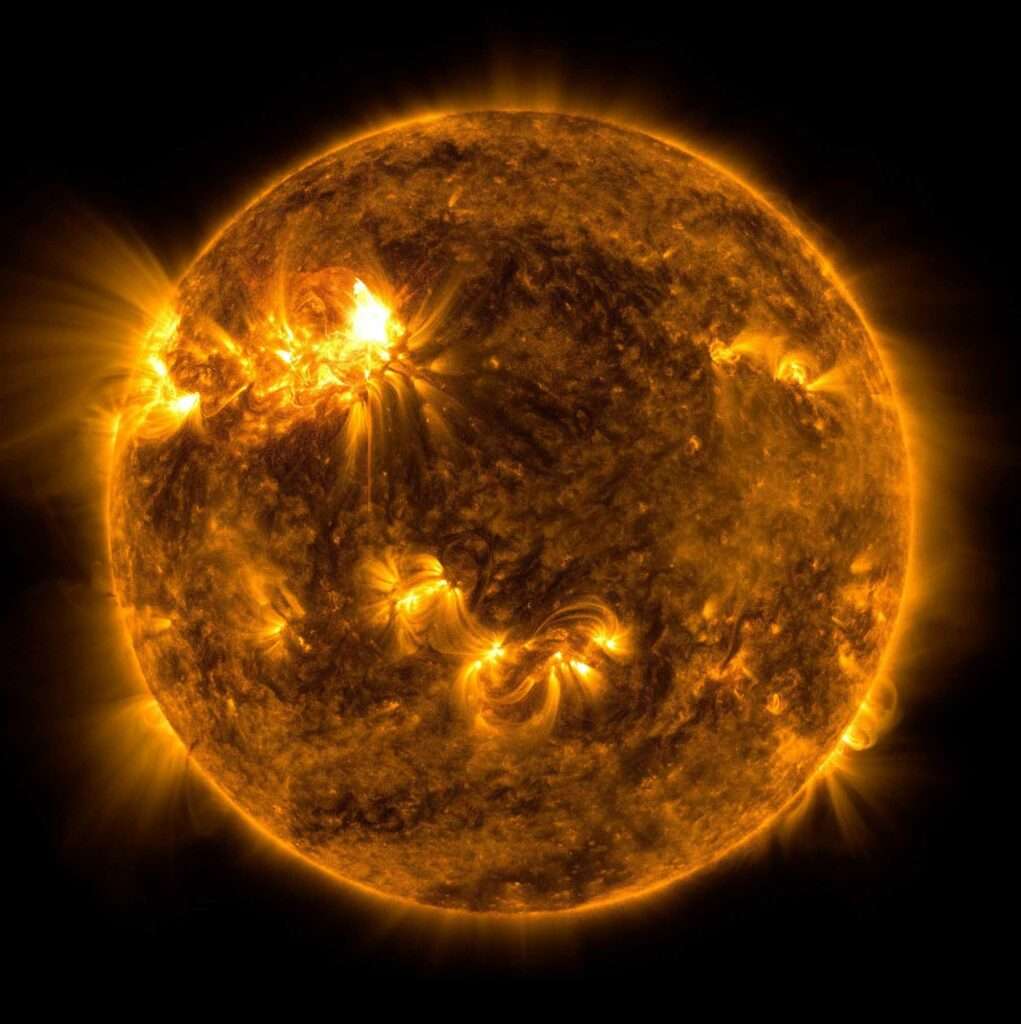NASA registered an M-Class solar flare on Wednesday and shared an image that highlights the “extremely hot material” in the powerful radioactive burst.
In a statement obtained by Newsflash, NASA said on 21st April: “The Sun emitted a moderate solar flare on April 20, 2022, peaking at 9:59 p.m. ET.
“NASA’s Solar Dynamics Observatory, which watches the Sun constantly, captured an image of the event.
“NASA’s Solar Dynamics Observatory captured this image of a solar flare – as seen in the bright flash in the upper left portion of the image– on April 20, 2022.
“The image shows a subset of extreme ultraviolet light that highlights the extremely hot material in flares, and which is colourized in yellow.
“Solar flares are powerful bursts of energy. Flares and solar eruptions can impact radio communications, electric power grids, navigation signals, and pose risks to spacecraft and astronauts.
“This flare is classified as an M-Class flare. M-class flares are a tenth the size of the most intense flares, the X-class flares.”

(SDO, NASA/Newsflash)
NASA says on its website: “Solar flares are large eruptions of electromagnetic radiation from the Sun lasting from minutes to hours.
“The sudden outburst of electromagnetic energy travels at the speed of light, therefore any effect upon the sunlit side of Earth’s exposed outer atmosphere occurs at the same time the event is observed.
“The increased level of X-ray and extreme ultraviolet (EUV) radiation results in ionization in the lower layers of the ionosphere on the sunlit side of Earth. Under normal conditions, high frequency (HF) radio waves are able to support communication over long distances by refraction via the upper layers of the ionosphere.
“When a strong enough solar flare occurs, ionization is produced in the lower, more dense layers of the ionosphere (the D-layer), and radio waves that interact with electrons in layers lose energy due to the more frequent collisions that occur in the higher density environment of the D-layer.
“This can cause HF radio signals to become degraded or completely absorbed. This results in a radio blackout – the absence of HF communication, primarily impacting the 3 to 30 MHz band. The D-RAP (D-Region Absorption Prediction) product correlates flare intensity to D-layer absorption strength and spread.
“Solar flares usually take place in active regions, which are areas on the Sun marked by the presence of strong magnetic fields; typically associated with sunspot groups. As these magnetic fields evolve, they can reach a point of instability and release energy in a variety of forms. These include electromagnetic radiation, which are observed as solar flares.”
To find out more about the author, editor or agency that supplied this story – please click below.
Story By: Lee Bullen, Sub-Editor: Michael Leidig, Agency: Newsflash
The Ananova page is created by and dedicated to professional, independent freelance journalists. It is a place for us to showcase our work. When our news is sold to our media partners, we will include the link here.




